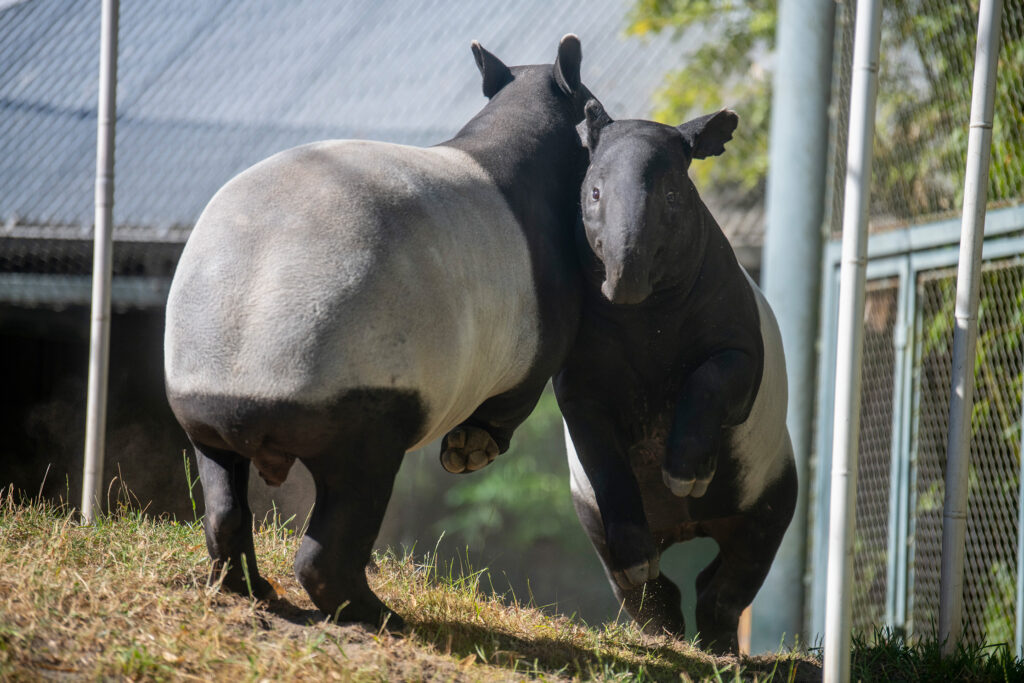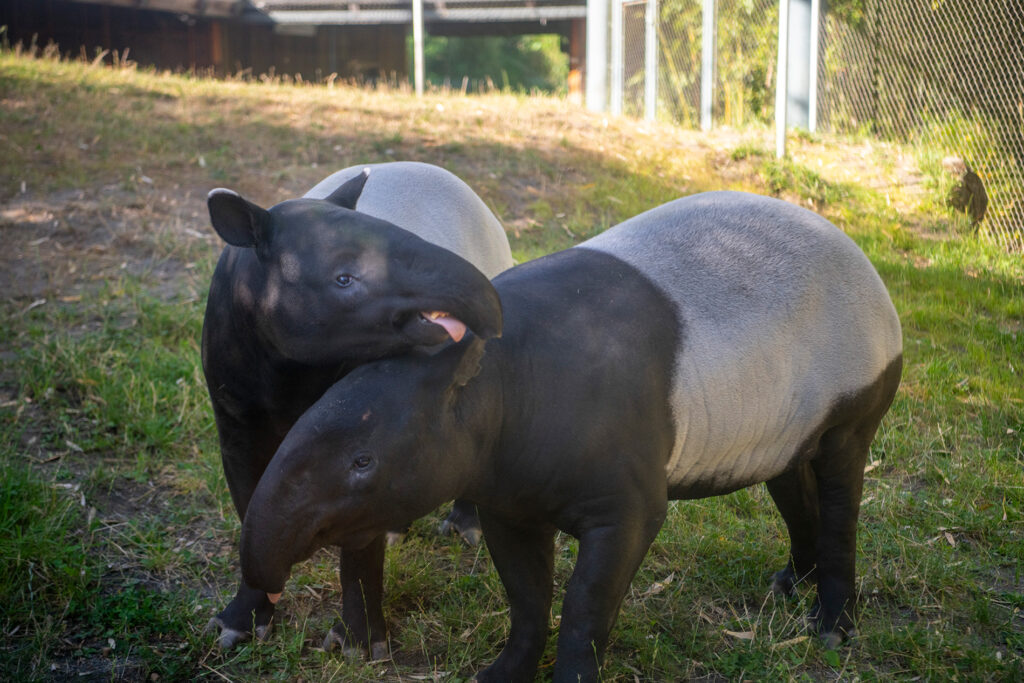What’s that sound? It’s the tapirs together again, sharing a habitat in the Asian Forest Sanctuary. Yuna (female) and Baku (male) know each other by smell and sound, but usually spend their days separately, as they would in the wild.
Now, a breeding recommendation by the Association of Zoos & Aquariums’ Species Survival Plan® (SSP) for Malayan tapirs calls for the pair to be together. As for that noise we mentioned, tapirs have sneezing hiccups, high-pitched squeals, and ear-piercing whistles, especially when they’re excited by another tapir. Keep your ears open as you walk by!
“They can get really excited,” says Curator of Asian Animals Telena Welsh. “They prance and run around.”
The SSP looks at the genetic makeup of each prospective parent before recommending a pairing; this helps ensure diversity of Malayan tapirs in North American zoos. As for babies, we’re hoping for happy news in the coming months. The gestation period for a tapir is about 13 months.
“Our participation in Species Survival Plans® is crucial to maintaining populations of endangered species like Malayan tapirs,” said Welsh. “We hope that when our guests see these animals at the zoo, they will connect with them in ways that inspire action on behalf of the world’s endangered wildlife.”
Yuna and Baku welcomed their firstborn, Kazu, in 2019. He was the first tapir calf born at the zoo in its 114-year history and now lives at another zoo.
The species is listed as endangered by the International Union for Conservation of Nature. Only an estimated 2,500 remain scattered in Thailand and Malaysia and on the Indonesian island of Sumatra.
Malayan tapirs once were found throughout the lowland rainforests of Southeast Asia. But the species’ numbers have declined dramatically due to human-animal conflict, including deforestation of their natural habitat.

